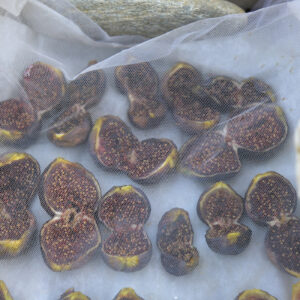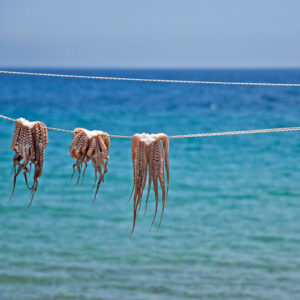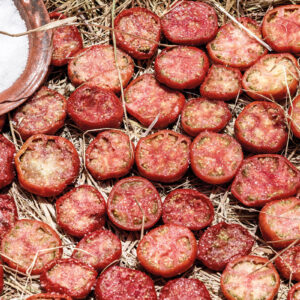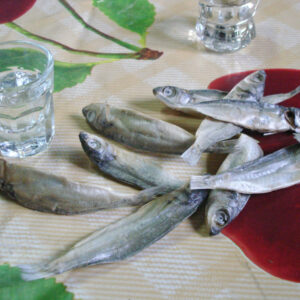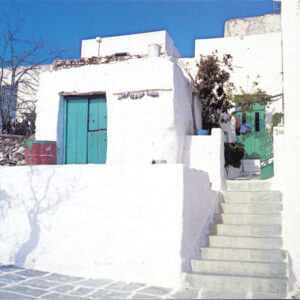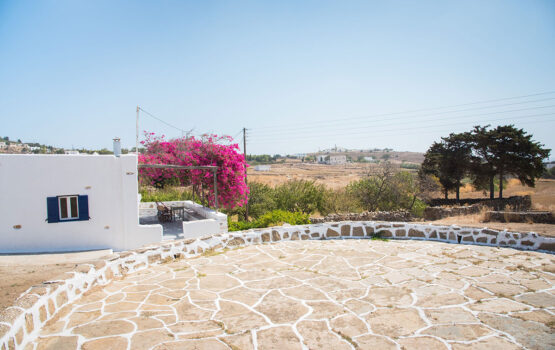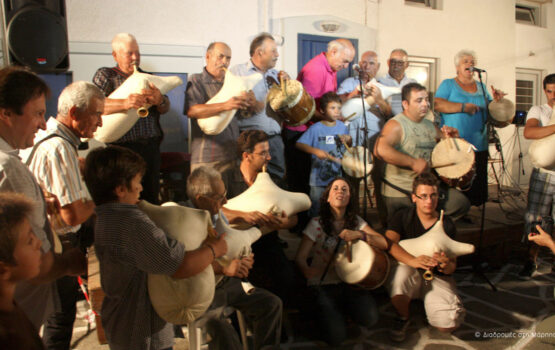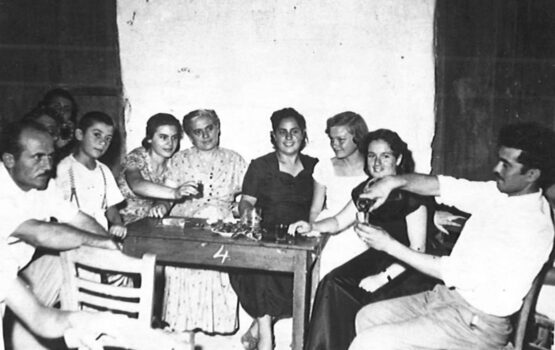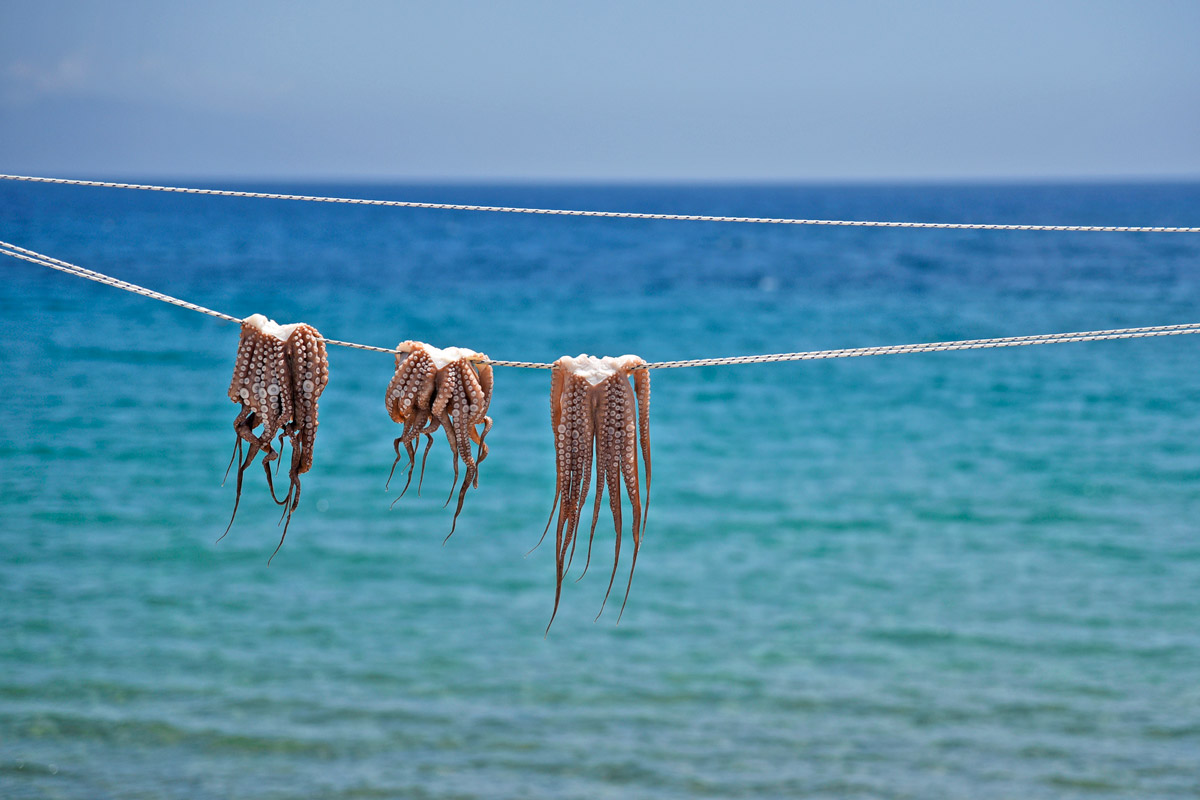
Islanders have learned to make the best use of products offered by the land and the sea. Sun-dried seasonal products are distinctive of the gastronomy of Paros. Housewives, fishermen and farmers took advantage of the strong summer sun for the preparation of their “sun-dried” goods, which could be preserved for many months, significantly increasing their options for appetizers, desserts and raw materials all year round. They also used the sun to dry the famous “mirmitzeli”, the handmade pasta of Paros.
Mpertolinos (small fish)
“μπορτολίνος, μπορτολινο, μπορτολνο <bortol’no
good fish appetizer, small bogue fish dried in the sun: also called mpertulina, mpertolinos, mpertolino, mpertulino, mpertoulinos, blturdini, portoulinos” (Aliprantis, 2001).
Once unloaded from the fishing boat, the bogue fish was placed in a jar with salt and water and then left to dry in the sun for 10-20 days on the cliffs or spread out on the roofs so that the cats could not reach it. Once dry, they put it in jars and baskets: one layer of straw, one layer of fish and they had their appetizer ready for the feasts and festivals. Using a similar method, they also sun-dried sprats, passing a thread through their head or tail with a needle, so that they could hang them high on a rod. (Ε.Τ.)
Gouna fish
This is a sun-drying technique used by the fishermen of Paros and other islands to preserve left over fish after a good catch for longer periods.
“Gouna” means the more fatty fish, such as tinker mackerel, plain mackerel or skipjack, which remain juicy even after they have been dried.
They are opened lengthwise in the middle, without removing the bone, spread on wooden surfaces, salted well, covered with tulle for protection from insects and left to cure in the air and sun (Darioti, N., Tsichlaki, Th. And Androulidakis, A.N., 2016, p. 191).
After this, the “gouna” can be kept in a shaded place for a long time. When it is to be eaten, it is charcoal grilled and served with olive oil and lemon dressing.
The name of the delicacy may also relate to the actual fur (gouna in Greek), as the hanged fish are reminiscent of leather drying in tanneries.
Octopus
In the old days, when I was a kid, they used to catch loads. They used to leave them in the sun, beat them, rub them, place them on wood and dry them. Then, after they had dried, they shaped them into balls, two or three kilos each and sent them off (to Piraeus). Once they had the ball, they cut long wooden sticks, like pins, and placed one on one side and one on the other, to stop the ball from moving, using them like nails, only these nails were made of wood. Octopus can last for years if dried; once all its liquids are gone, it does not go bad, even outside a fridge. Whatever they ate here was fresh. (Ε.Τ.)
Figs samota (with sesame)
They are harvested at the end of July or August (depending on the weather and rain). They choose ripe figs, open them a little on top and leave them on thyme for 20 days out in the sun, covered with gauze fabric on some elevated point that cats could not reach. Then they wash them, open them in four or two and fill them with roasted sesame and walnuts crushed in the mortar. Then they oven-bake them for a while and put them in glass or clay jars. In this way they are preserved until the next summer… (K.A.)
Tomato sauce
Those who had their own gardens picked tomatoes, put them in basins, let them ripen under the sun for three days until they became squashy. They they put them in gauze fabric to drain well, leaving just the pulp. Housewives added a little oil and put it in the food. People could also buy it too… (Z.F.B.)
Sources
Archives of the Association “Routes in Marpissa”.
Aliprantis, N. Chr. (2001) Λεξικό των ιδιωμάτων και των εγγράφων της Πάρου. Με τρεις μελέτες για τα ιδιώματα της Πάρου (Dictionary of idioms and documents of Paros. With three studies on the idioms of Paros). Athens: Association of Lefka People in Athens for Progress and MEEAS “Yria” of Lefkes – Paros.
Darioti, N., Tsichlaki, T. and Androulidakis, A.N. (2016) Του Άνεμου και της Αρμύρας (Of wind and salt). Syros: Cyclades Development and Promotion Company.
Special thanks to Katina Alipranti, Nikitas Aliprantis, Ioanna Peraki, Emmanuel Tsigonias, Stefanos (Stefanis) Frantzis, Zafeira Frantzis – Vitzilaiou for the information and their valuable assistance.

